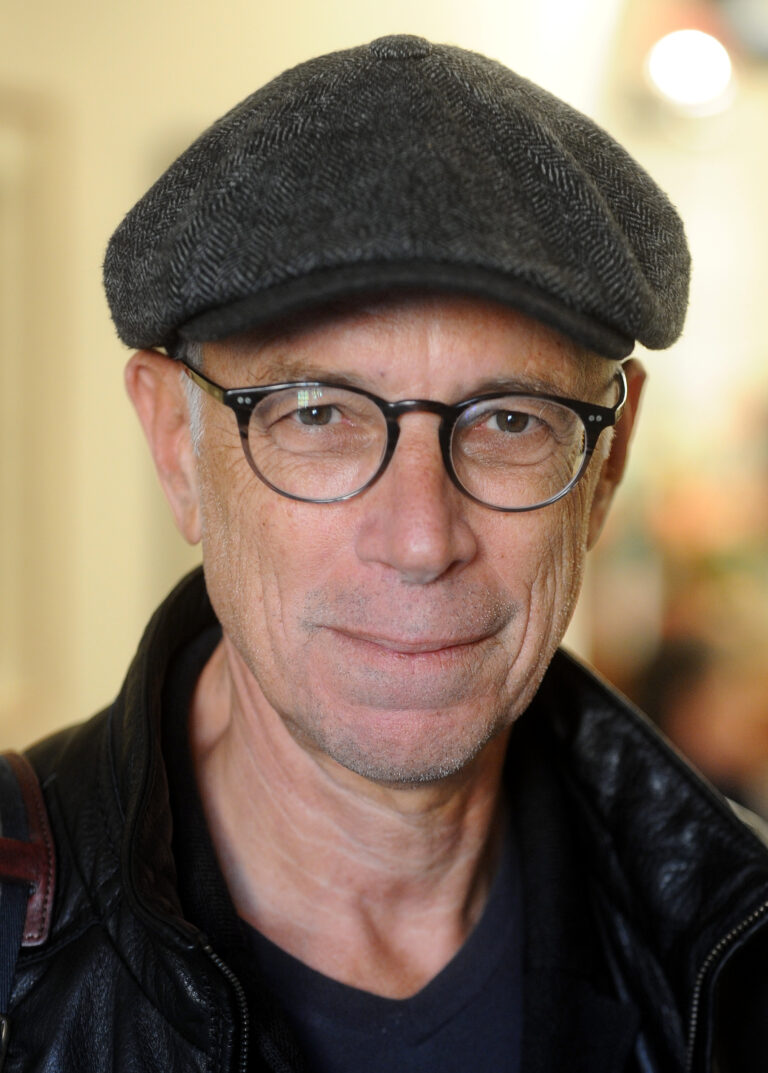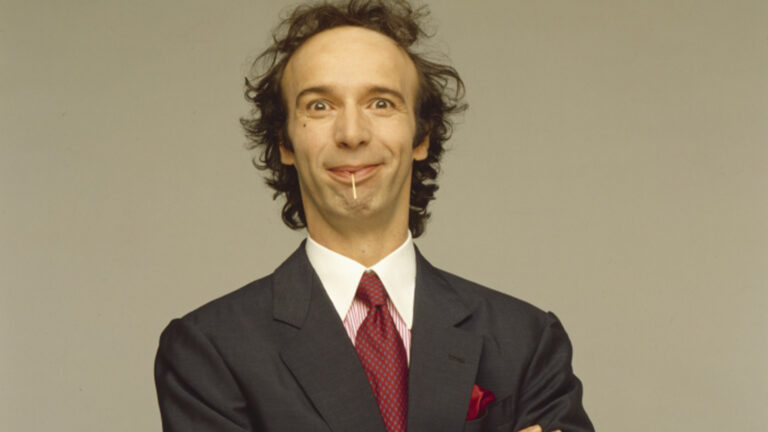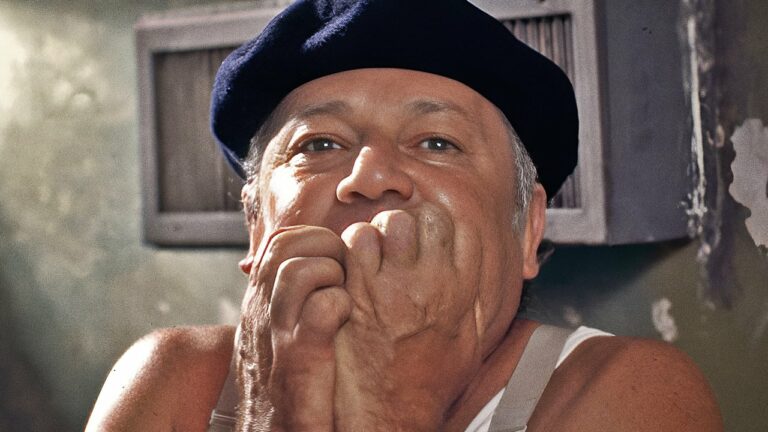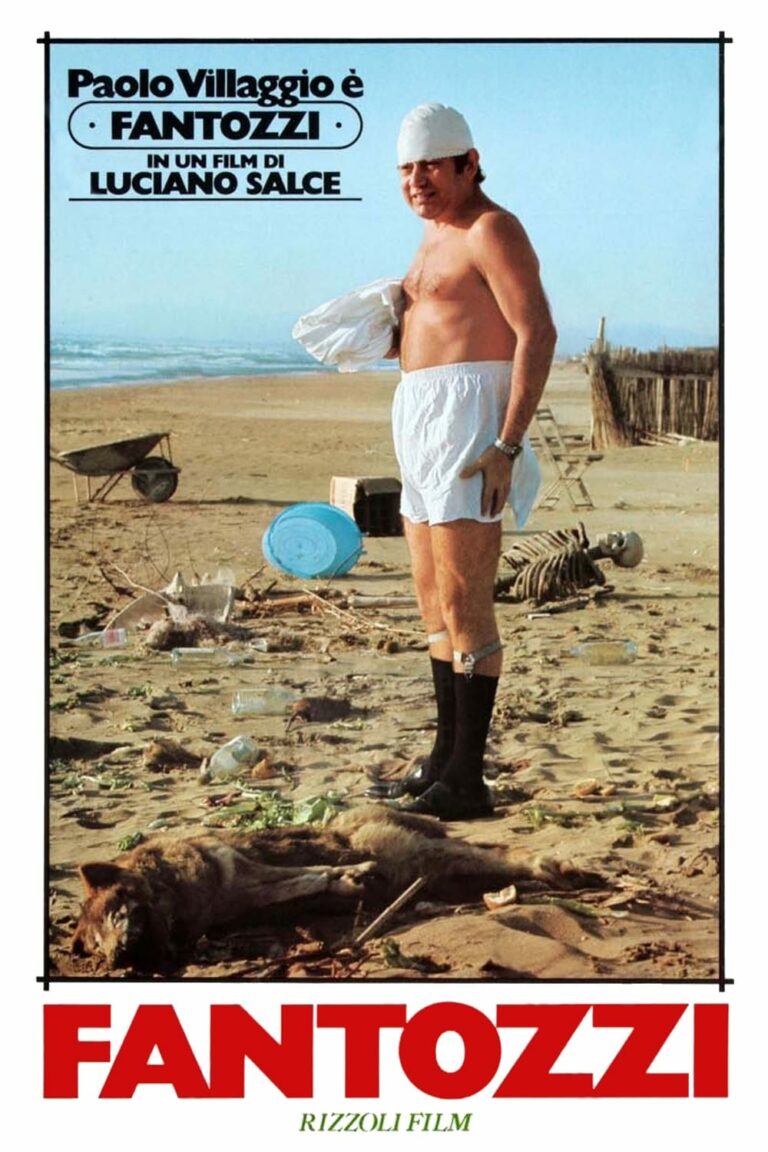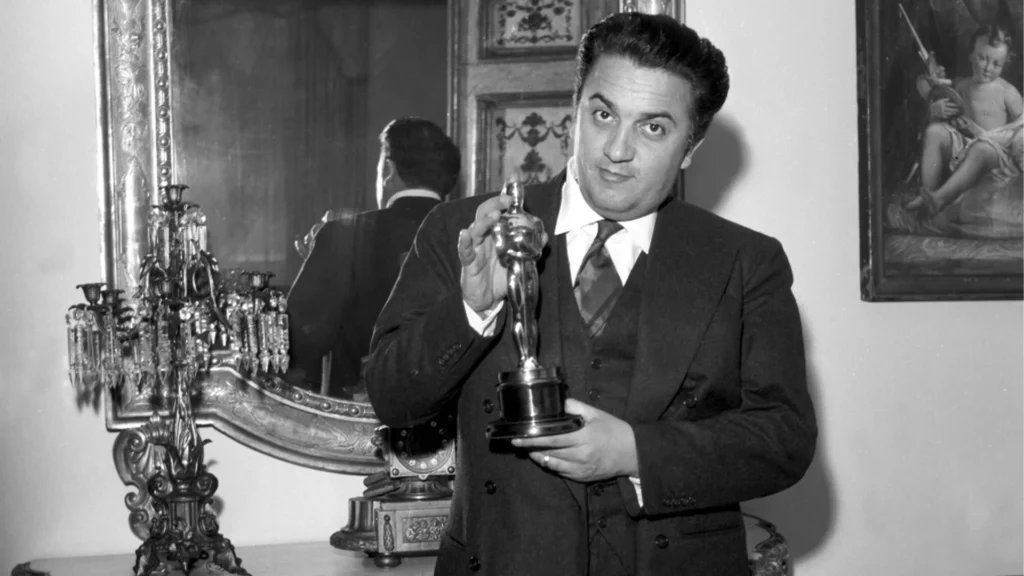
Federico Fellini (1920–1993) was one of the most influential and celebrated filmmakers in the history of cinema. Known for his distinctive style that blended fantasy, nostalgia, and surrealism, Fellini crafted deeply personal and universally resonant films that continue to captivate audiences worldwide. From intimate dramas to grand spectacles, his works transcend traditional storytelling, exploring the complexities of human experience through vivid imagery, memorable characters, and a touch of the fantastical.
Early Life and Education
Federico Fellini was born on January 20, 1920, in Rimini, a small seaside town on the Adriatic coast of Italy. His father, Urbano Fellini, was a traveling salesman, and his mother, Ida Barbiani, came from a bourgeois Catholic family. Fellini’s upbringing was marked by a tension between the strict expectations of his parents and his own irrepressible imagination.
As a child, Fellini showed a fascination with storytelling, drawing, and the circus, all of which would later become recurring motifs in his films. He attended a Jesuit school and later moved to Florence, where he briefly studied law but quickly abandoned it in favor of pursuing his artistic passions.
In 1939, Fellini moved to Rome, a city that would become a central character in many of his films. There, he began working as a journalist, cartoonist, and scriptwriter, immersing himself in the vibrant cultural and intellectual life of the capital.
Early Career in Cinema
Fellini’s entry into the world of film came as a screenwriter during the 1940s. He collaborated with Roberto Rossellini on several projects, most notably the Neorealist classic Rome, Open City (1945), for which he co-wrote the screenplay. This experience gave Fellini valuable insight into the filmmaking process and introduced him to the possibilities of storytelling through cinema.
In 1950, Fellini made his directorial debut alongside Alberto Lattuada with the film Variety Lights (Luci del varietà), a bittersweet tale of life in a traveling theater troupe. Though the film received modest attention, it marked the beginning of Fellini’s journey as a director.
Rise to Prominence: Early Masterpieces
By the early 1950s, Fellini had begun to establish his unique voice as a filmmaker, blending elements of Neorealism with his own penchant for dreamlike imagery and introspection.
“I Vitelloni” (1953)
This semi-autobiographical film about a group of aimless young men in a provincial town earned international acclaim and marked Fellini’s emergence as a significant cinematic talent.
“La Strada” (1954)
Starring Giulietta Masina, Fellini’s wife and muse, alongside Anthony Quinn, La Strada is a poignant tale of love, loneliness, and redemption. The film won the Academy Award for Best Foreign Language Film, establishing Fellini as a major figure in world cinema.
“Nights of Cabiria” (1957)
Another collaboration with Masina, this film tells the story of a resilient and tragic prostitute in Rome. It won the Academy Award for Best Foreign Language Film and solidified Fellini’s reputation as a master storyteller.
Fellini’s Golden Era: The 1960s
The 1960s saw Fellini reach the zenith of his creative powers, producing some of the most iconic and influential films in cinematic history.
“La Dolce Vita” (1960)
This groundbreaking film, starring Marcello Mastroianni as a disillusioned journalist navigating Rome’s hedonistic high society, became an instant classic. Its iconic Trevi Fountain scene with Anita Ekberg remains one of cinema’s most enduring images. The term la dolce vita (“the sweet life”) has since entered the cultural lexicon as a symbol of excess and existential yearning.
“8½” (1963)
Often regarded as Fellini’s magnum opus, 8½ is a semi-autobiographical exploration of a filmmaker’s creative block and existential crisis. Combining surrealism, memory, and fantasy, the film is a visual and narrative masterpiece that continues to influence filmmakers worldwide. It won two Academy Awards, including Best Foreign Language Film.
“Juliet of the Spirits” (1965)
Fellini’s first color film starred Giulietta Masina in a dreamlike journey of self-discovery. The film’s bold visual style and exploration of spirituality and the subconscious showcased Fellini’s growing interest in psychological and surrealist themes.
Later Career: Surrealism and Spectacle
In the 1970s and 1980s, Fellini continued to push the boundaries of cinematic storytelling, creating films that were increasingly ambitious and personal.
“Satyricon” (1969)
Based on the fragmented ancient Roman novel by Petronius, this visually extravagant film is a surreal exploration of decadence and moral decay in ancient Rome.
“Amarcord” (1973)
A nostalgic and whimsical look at Fellini’s childhood in Rimini, Amarcord is filled with eccentric characters and humorous vignettes. The film won the Academy Award for Best Foreign Language Film and is one of Fellini’s most beloved works.
“Casanova” (1976)
This lavish and surreal interpretation of the life of Giacomo Casanova delves into themes of loneliness and obsession, blending historical drama with Fellini’s signature fantastical style.
“City of Women” (1980)
Starring Marcello Mastroianni, this film explores the labyrinthine world of gender dynamics and male fantasies, blending surrealist imagery with social commentary.
Themes and Style
Federico Fellini’s films are characterized by their richly imaginative visuals, episodic structures, and exploration of dreams, memory, and identity. Recurring themes in his work include:
- The tension between reality and fantasy: Fellini often blurred the line between the real and the surreal, creating cinematic worlds where dreams and memories intertwine.
- Nostalgia for childhood and provincial life: Films like Amarcord and I Vitelloni reflect his longing for the simplicity and innocence of his youth.
- The circus and performance: The imagery of clowns, carnivals, and theatricality permeates his work, symbolizing both joy and melancholy.
- Exploration of spirituality and the human psyche: Fellini frequently delved into questions of identity, faith, and the subconscious, influenced by his interest in Carl Jung’s theories.
Personal Life
Fellini married actress Giulietta Masina in 1943, and their creative partnership became one of the most celebrated in film history. Masina appeared in several of his most famous works, bringing warmth and vulnerability to his stories. Despite rumors of infidelity on Fellini’s part, the couple remained together until his death.
Fellini was known for his charm, wit, and boundless creativity. He was a larger-than-life figure who embraced the chaos and beauty of life, both on and off-screen.
Awards and Legacy
Federico Fellini received numerous accolades throughout his career, including:
- Four Academy Awards for Best Foreign Language Film (La Strada, Nights of Cabiria, 8½, Amarcord).
- An honorary Academy Award in 1993 for his lifetime contribution to cinema.
- The Palme d’Or at the Cannes Film Festival for La Dolce Vita (1960).
Fellini’s influence on cinema is immeasurable. Filmmakers such as Martin Scorsese, Woody Allen, David Lynch, and Terry Gilliam have cited him as a major inspiration. His ability to blend the personal with the universal, and the real with the surreal, set a standard for cinematic artistry.
Death and Remembrance
Federico Fellini passed away on October 31, 1993, in Rome, following complications from a stroke. His death marked the end of an era in Italian cinema, but his legacy lives on through his films, which continue to inspire and enchant audiences around the world.
Fellini’s work remains a testament to the power of imagination, proving that cinema can transcend boundaries and speak to the deepest parts of the human soul.
